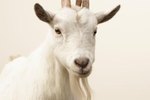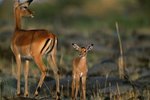
When you think of protein rich foods, you probably envision meat, eggs, beans and the like. However, animals that eat almost exclusively grass, such as cows and horses, have no problem getting enough protein in their diet. Unlike humans, herbivores are capable of digesting plant cells and getting to the nutrients locked inside, like protein.
Herbivores
Animals that get all their nutrition from grass and other plants are called herbivores. Herbivores are capable of something that humans aren’t: digesting cellulose. Cellulose is a type of carbohydrate that helps make up plant cell walls. These cell walls are rigid and hard to break down, making them difficult to digest, even for herbivores. Herbivores have digestive systems that contain bacteria that have the enzymes necessary to break down cellulose. Once the cells are broken down they can access proteins, sugar and fat locked inside plant cells.
Eating More
Grass is not only difficult to digest, but time-consuming to eat. Many herbivores depend on grass for a majority of their diet, but grass doesn’t contain as much protein as meat does. A predator can get enough protein by eating perhaps only a handful of meaty meals a day. However, animals who eat grass must spend most of their day munching away on grass to get enough protein and other nutrients in their diet.
Monogastrics
Digesting cellulose to obtain protein isn’t a fast process. Herbivores use fermentation to break down the grass they eat. Monogastric animals have only one stomach. Monogastrics include horses, zebras and rabbits. Humans are monogastrics, but aren’t capable of using cellulose. Herbivores that eat grass and break down cellulose have enlarged stomachs or an area in the intestine where fermentation can take place in order to break down plant cells. They are classified as either foregut or hindgut fermenters depending on whether fermentation happens in the stomach or further along in the digestive tract.
Ruminants
Ruminants, like cows, have stomachs with four parts and chew their cud. Ruminants are capable of digesting grass more completely since it stays in the digestive system longer. They have a section of their stomach called the rumen specifically for the fermentation of plant material. It’s full of bacteria capable of breaking down cellulose. They regurgitate the food and chew it to further break it down, called the cud. Examples of ruminants include cows, sheep, goats and deer.
References
Photo Credits
-
John Foxx/Stockbyte/Getty Images



